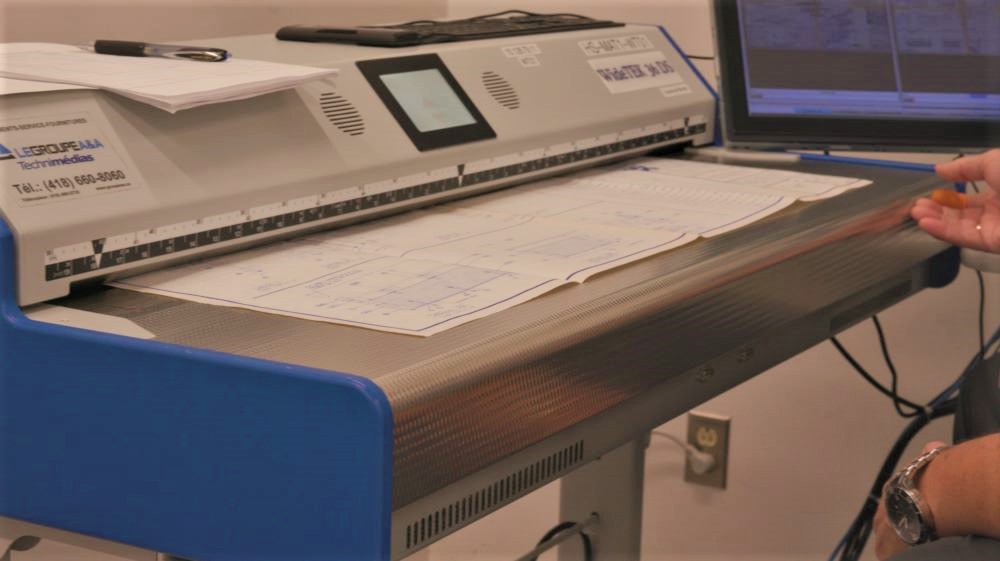Market innovations turn pixels into accessible documents

We’re breaking down barriers by working to make the Government of Canada documents and publications available online accessible for all readers, including those with vision challenges.
The Document Imaging Solutions Centre (DISC) is on a mission to achieve this goal, with help from federal colleagues and private sector innovators, to ensure important information is within everyone’s reach.
A focus on accessibility for all Canadians
The Accessible Canada Act, which was passed in 2019, aims to make Canada barrier-free by 2040. Since the passing of the act, the Government of Canada has committed to improving the accessibility of its programs and services.
DISC, which is part of Public Services and Procurement Canada (PSPC), provides digital imaging services to federal departments and agencies. Digitizing documents helps to green government operations while putting key information at the fingertips of both public servants and Canadians.

In line with its work, DISC is exploring technologies to advance document accessibility online. Federal websites generally meet accessibility standards already. The goal now is to ensure that all files and documents posted on government sites, such as the library of government publications, are accessible as well. This is an ambitious goal for a number of reasons.
The government posts thousands of documents online, many of them digitized by DISC, and current imaging technology requires significant manual input to make the files accessible. This technology is not designed to promote document accessibility in high-volume production settings.
David Paquette, a DISC project manager working on improving file accessibility, explains how additional factors make the process complex:
“Existing solutions deal with repetitive documents. In our case, every imaging project is totally different. We work with unique collections that include not only text on letter-sized documents, but maps, charts and more. We get a huge variety of files, so every project is its own world.”
Exploring new technologies
Working with Innovative Solutions Canada, a federal procurement program that supports pioneering businesses, DISC recently issued a challenge to the private sector to design a solution that leverages progress in automation to make all documents accessible in bulk.
It’s a tall order for businesses. DISC is seeking a solution that makes use of several leading technologies, not just robotic automation, but also artificial intelligence and optical character recognition.
A combination of these technologies may be able to produce volumes of content that meets the global accessibility standard the federal government aims to follow for documents posted online. As Paquette notes, this solution really requires all the “latest technological advances.”
Fortunately, Canada has a thriving innovation sector, and 27 proposals were received in response to the challenge. Of them, 3 systems were selected for testing in pilot projects, following an evaluation process that included feedback from federal accessibility experts. Their input was critical. “It was a bit nerve-wracking to initiate a project that has such a large innovative component to it, for something that doesn’t really exist,” Paquette says. “But, working with our accessibility colleagues in the federal government provides us with valuable support.”
After the pilot projects, promising solutions will undergo further development to turn them into products that can be used by DISC and also procured by other organizations seeking to streamline the production of accessible documents. In this way, PSPC could make a considerable contribution to reaching the objectives of the Accessible Canada Act.
A commitment to leadership in accessibility
Accessible documents have many uses, starting with improving access to information for the 1.5 million Canadians who identify as having sight loss and the 5 million more at risk of sight loss (statistics provided by the CNIB Foundation).
Paquette points to other advantages to producing accessible documents, including the fact that they are more web-ready than non-accessible documents. So, if all digital documents are accessible, more content can be shared online. This is one way this project could help all Canadians.
Many of the accessibility features also have direct value for a wide range of readers. “I think the capacity to have the application read the file to us will come in handy not just for the visually impaired,” says Paquette. “Meanwhile, being able to change the font or font size and having a table of contents generated is a plus that benefits many users.”
Canada’s intention to show leadership in accessibility and government transparency provides a unique opportunity to develop solutions that could serve many public and private organizations.
“I’m always thrilled to solve problems,” says Paquette, “and this time, it could have a significant impact on Canadians and Canada.”
We all benefit from accessibility when we and our family members, friends, neighbours, classmates and co-workers can participate in our communities and workplaces without barriers.
To learn more about DISC, visit the Document Imaging Solutions Centre.